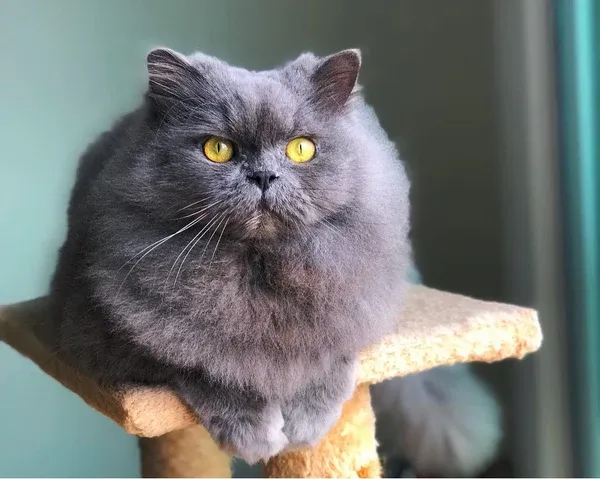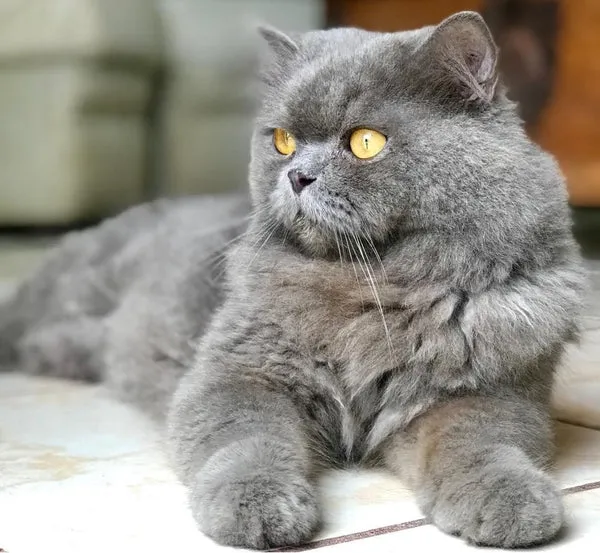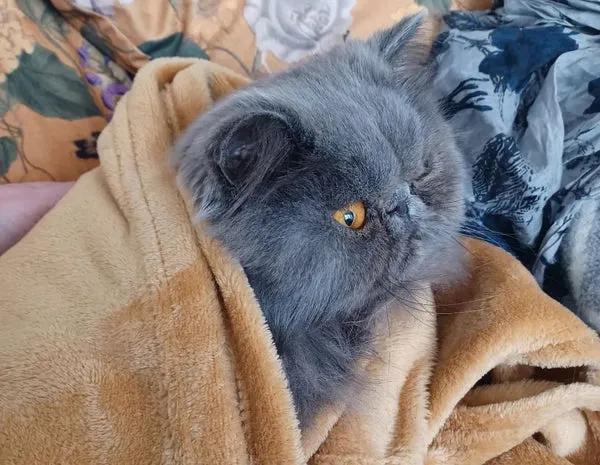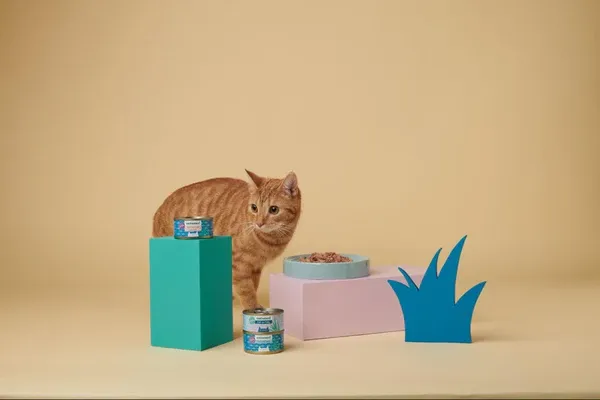The Blue Persian Cat stands out as one of the most beloved breeds worldwide, known for its stunning smoky-blue coat, flat face, and large expressive eyes. Often called “blue longhairs,” these elegant felines capture hearts with their luxurious fur and gentle demeanor. If you’re a new owner or considering adopting a exotic Persian cat, understanding their history, traits, and care needs is essential for ensuring they thrive.
This guide covers everything from their origins to grooming routines and nutrition, helping you raise a content blue Persian cat. Whether you’re drawn to their regal appearance or affectionate nature, proper care will keep your kitty purring happily for years.
History of the Blue Persian Cat
The blue Persian cat’s story spans centuries, blending ancient origins with modern popularity. Originating from Mesopotamia (ancient Persia), these cats were smuggled to Europe by explorers in the 17th century. Their exotic beauty quickly made them status symbols among nobility.
Over time, selective breeding enhanced their distinctive features: rounder heads, flatter faces, smaller ears, and that signature dense blue coat. Royalty like Queen Victoria adored them, boosting their fame. Celebrities such as Florence Nightingale and Marilyn Monroe owned Persians, and they even appeared in films like James Bond. By the late 19th century, cat fancier clubs formally recognized the breed, with Persians starring in the world’s first cat show at London’s Crystal Palace in 1871.
 Blue Persian cat lounging regally on a cat tree
Blue Persian cat lounging regally on a cat tree
This rich heritage underscores why blue Persians remain a top choice among all kinds of cats.
Physical Traits of Blue Persian Cats
Blue Persian cats are medium to large, weighing 3–6 kg, with a sturdy build, short legs, thick neck, and pronounced muscles giving them a chubby yet solid appearance. Their standout feature is the long, silky double coat in a shimmering blue shade, thick and prone to matting without regular care.
They have massive round heads, flattened faces (brachycephalic structure), tiny noses and ears, and huge, prominent eyes that convey perpetual curiosity. These traits, while charming, can lead to health considerations like breathing issues or tear staining, so regular vet check-ups are vital.
| Feature | Description |
|---|---|
| Body & Size | Chubby, short-legged, 3–6 kg |
| Coat | Long, dense, smoky blue |
| Head & Face | Round head, flat face, large eyes |
As part of domestic cat breeds, their physique demands tailored grooming to prevent skin folds from harboring bacteria.
Personality Traits of Blue Persian Cats
Beyond their looks, blue Persian cats enchant with mild-mannered, loving personalities. They’re affectionate companions who crave petting and lap time, often greeting owners at the door like dogs. Friendly with strangers, they adapt well to households but prefer quiet spaces away from noise.
Vocal yet not overly demanding, they purr loudly when content and meow to express needs. Laid-back and lazy, they nap up to 20 hours daily, rarely causing mischief unlike more playful breeds. While not the quickest learners for tricks, their calm, social nature makes them ideal for apartments or families.
 Blue Persian cat napping peacefully in a cozy spot
Blue Persian cat napping peacefully in a cozy spot
These traits align with many grey cat breeds, offering low-energy companionship.
Grooming Essentials for Blue Persian Cats
All Persians, including blue variants, require diligent grooming due to their coat and facial structure. Establish a routine to keep fur mat-free, skin healthy, and prevent common issues like dental disease.
Daily brushing with a wide-toothed metal comb removes tangles—use short strokes and seek professional help for severe mats. Trim nails weekly (more for indoor cats); provide scratching posts to mimic outdoor filing. Bathe sparingly, every 2–3 months, only if needed.
Clean eyes and ears frequently with a warm water-dampened cotton ball to remove discharge from their flat faces. Brush teeth daily and offer dental treats to combat gingivitis and tooth loss, as recommended by veterinary experts like those from the American Animal Hospital Association (AAHA).
 Blue Persian cat during grooming session with owner
Blue Persian cat during grooming session with owner
Consistent care, informed by real owner experiences, ensures your blue Persian stays comfortable and odor-free.
Optimal Diet for Blue Persian Cats
A high-protein diet is crucial for maintaining the blue Persian cat’s coat shine, muscle tone, and overall vitality. As obligate carnivores, they need at least 50% animal-based protein and up to 20% fats from quality meats and fish—avoid vegan or carb-heavy foods that cause digestive upset like diarrhea or IBS.
Key nutrients include taurine for heart health and vision (from chicken, turkey, tuna), collagen for skin and bones (fish, pork), vitamin E for immunity (salmon, shrimp), and omega-3/6 fatty acids to reduce shedding and inflammation (mackerel, sardines).
| Micronutrient | Benefits | Sources |
|---|---|---|
| Taurine | Heart, vision, immunity | Chicken, liver, tuna |
| Collagen | Bone density, skin hydration | Fish, beef, bone broth |
| Vitamin E | Cell protection, immune boost | Salmon, prawns |
| Omega-3/6 | Coat health, anti-inflammatory | Mackerel, sardines |
Consult a vet for personalized plans, especially for kittens, seniors, or those with sensitivities.
Hydration and Feeding Tips
Hydration supports coat health and prevents urinary issues common in Persians. Since they drink little, choose wet food with 70%+ moisture over dry kibble (10% moisture), which can lead to obesity.
Mix broths into meals for appeal, but prioritize canned options for better ingredients and hydration. This routine, backed by feline nutrition studies from the World Small Animal Veterinary Association (WSAVA), promotes optimal weight and fewer hairballs.
 Blue Persian cat enjoying a meal of wet food
Blue Persian cat enjoying a meal of wet food
Variations in Persian Cat Colors
Blue Persians are one of many stunning shades in seven divisions: solid (blue, black, cream), silver/gold, smoke/shaded, tabby, particolor, bicolour, and Himalayan points. Each requires similar care, highlighting the breed’s versatility.
 Shiny blue Persian cat showcasing healthy coat
Shiny blue Persian cat showcasing healthy coat
Raising a blue Persian cat demands patience, routine grooming, and nutrient-rich feeding. By addressing their unique needs—from flat-face cleaning to protein-focused diets—you’ll foster a long, joyful life, often 12–15 years with proper care. Always partner with a veterinarian for tailored advice, and explore more on short haired cat breeds for comparisons.
References
- American Animal Hospital Association (AAHA) Dental Care Guidelines for Cats
- World Small Animal Veterinary Association (WSAVA) Nutrition Guidelines
- Feline Advisory Bureau on Persian Breed Health
